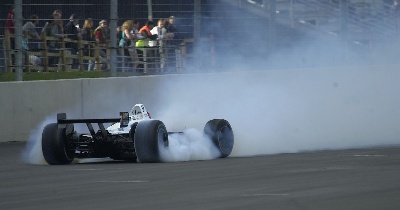


Operational Errors:
As with any analysis, errors and shortcomings can be expected. As I obtained my data mainly from the gvrd/gen folder and already in Idrisi32 format I did not experience any real problems when working with the data. The minor operational problems I experienced were when producing the distance and fuzzy images, sometimes the screen came up blank. This was corrected either by just repeating the operation, or by closing all other open windows in Idrisi and then repeating the operation.
Weighting of Factors and Choosing Suitability Values:
The main aspect of errors in my analysis lies in my own human interpretations. I interpreted that landuse would be the most important factor and thus, I weighted it accordingly. However, another person may have judged that the proximity away from residential and commercial areas would be the most important factor. Changing the values of the weights could have a great effect on the outcome of the results, indicating that the results of the analysis are subject to which ever factor the user deems to be most important. Importance of factors can also change over time. For example as the population grows and residential areas increase, proximity to these areas may become more important. Another problem I noticed with the analysis regarding the weighting of factors was that since I weighted the landuse so high, the results almost seem to ignore some of the other factors such as proximity to public transit (which I weighted to low).
Similarly, some of the fuzzy values and control point values I used could be interpretted differently by another individual. For example, I set the control point values for the MJROADS image to 100 for c and 500 for d, while I set the control value d to 1000 for the other two images. I determined that closeness to roads was more important than closeness to public transit and thus gave it a lower d value, whereas another individual may have set all the control point values for the transportation images to be equal.
Room for Improvements?
Improvements could be made to the analysis by spending more time collecting data and looking outside of what is available on the S:\355-data drive. Perhaps demographic data could have been obtained through a small survey to find out a representation of general which municipalities would support the Molson Indy and which would strongly oppose having the race in their community. This data could then have shed some more light on how I should have weighted my factors. Additionally, a different type of analysis could have been performed by finding a least cost pathway for the track route. This could be created creating a friction surface from a roads network that has been coded with frictional values (ie: high friction values would be given to those roads that run through residential and commercial areas while low values would be given to those that ran through undeveloped areas). However, I am not sure how feasible this method would be because although I would have frictional values for all the roads, I would still have to manually chose a starting point and some midpoints to link my pathway to.